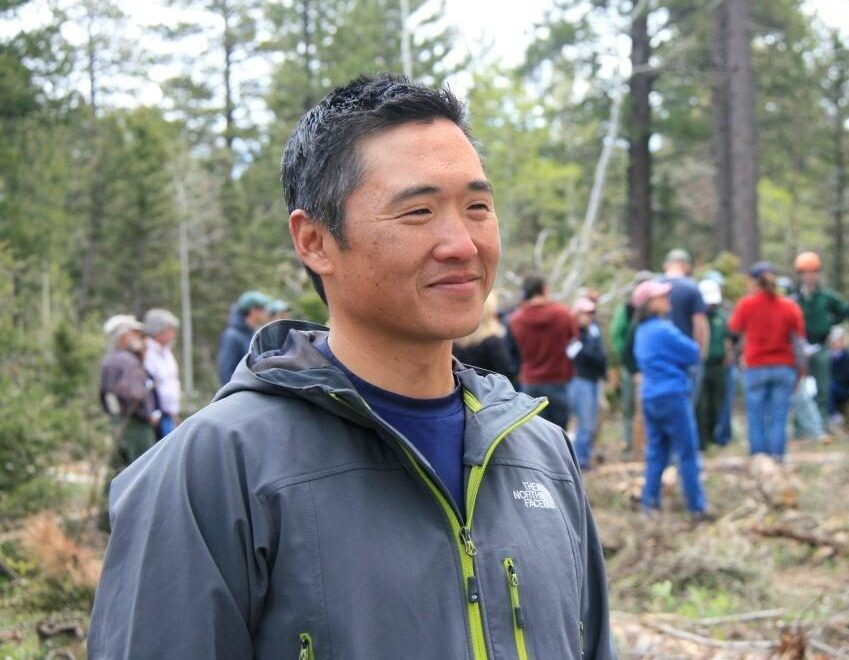The Following Publications were used as source material for a presentation within the Colorado Wildfires 2020 Webinar Series: Historical Perspectives on Forest and Wildfire Policy and Management in the Western US by Dr. Tony Cheng. Dr. Cheng is a Professor and Extension with the Department of Forest and Rangeland Stewardship at Colorado State University, Director of the Colorado Forest Restoration Institute and Principle Investigator for the Southern Rockies Fire Science Network.
To watch a recording of Dr. Cheng’s presentation click HERE.
To register for upcoming CO Wildfires 2020 Webinars in this series click HERE.
The publications Dr. Cheng references in his presentation are listed below
References:
Journal Articles:
Caggiano, M. D., Hawbaker, T. J., Gannon, B. M., & Hoffman, C. M. (2020). Building Loss in WUI Disasters: Evaluating the Core Components of the Wildland–Urban Interface Definition. Fire, 3(4), 73. https://doi.org/10.3390/fire3040073
Calkin, D. E., Thompson, M. P., & Finney, M. A. (2015). Negative consequences of positive feedbacks in US wildfire management. Forest Ecosystems, 2(1), 9. https://doi.org/10.1186/s40663-015-0033-8
Cronon, W. (1992). A Place for Stories: Nature, History, and Narrative. The Journal of American History, 78(4).
Fischer, A. P., Spies, T. A., Steelman, T. A., Moseley, C., Johnson, B. R., Bailey, J. D., Ager, A. A., Bourgeron, P., Charnley, S., Collins, B. M., Kline, J. D., Leahy, J. E., Littell, J. S., Millington, J. D., Nielsen-Pincus, M., Olsen, C. S., Paveglio, T. B., Roos, C. I., Steen-Adams, M. M., … Bowman, D. M. (2016). Wildfire risk as a socioecological pathology. Frontiers in Ecology and the Environment, 14(5), 276–284. https://doi.org/10.1002/fee.1283
Hessburg, P. F., Miller, C. L., Parks, S. A., Povak, N. A., Taylor, A. H., Higuera, P. E., Prichard, S. J., North, M. P., Collins, B. M., Hurteau, M. D., Larson, A. J., Allen, C. D., Stephens, S. L., Rivera-Huerta, H., Stevens-Rumann, C. S., Daniels, L. D., Gedalof, Z., Gray, R. W., Kane, V. R., … Salter, R. B. (2019). Climate, Environment, and Disturbance History Govern Resilience of Western North American Forests. Frontiers in Ecology and Evolution, 7, 239. https://doi.org/10.3389/fevo.2019.00239
Marlon, J. R., Bartlein, P. J., Gavin, D. G., Long, C. J., Anderson, R. S., Briles, C. E., Brown, K. J., Colombaroli, D., Hallett, D. J., Power, M. J., Scharf, E. A., & Walsh, M. K. (2012). Long-term perspective on wildfires in the western USA. Proceedings of the National Academy of Sciences, 109(9), E535–E543. https://doi.org/10.1073/pnas.1112839109
Nowacki, G. J., & Abrams, M. D. (2008). The Demise of Fire and “Mesophication” of Forests in the Eastern United States. BioScience, 58(2), 123–138. https://doi.org/10.1641/B580207
Roos, C. I. (2020). Scale in the study of Indigenous burning. Nature Sustainability, 3(11), 898–899. https://doi.org/10.1038/s41893-020-0579-5
Roos, C. I., Bowman, D. M. J. S., Balch, J. K., Artaxo, P., Bond, W. J., Cochrane, M., D’Antonio, C. M., DeFries, R., Mack, M., Johnston, F. H., Krawchuk, M. A., Kull, C. A., Moritz, M. A., Pyne, S., Scott, A. C., & Swetnam, T. W. (2014). Pyrogeography, historical ecology, and the human dimensions of fire regimes. Journal of Biogeography, 41(4), 833–836. https://doi.org/10.1111/jbi.12285
Roos, Williamson, & Bowman. (2019). Is Anthropogenic Pyrodiversity Invisible in Paleofire Records? Fire, 2(3), 42. https://doi.org/10.3390/fire2030042
Schoennagel, T., Balch, J. K., Brenkert-Smith, H., Dennison, P. E., Harvey, B. J., Krawchuk, M. A., Mietkiewicz, N., Morgan, P., Moritz, M. A., Rasker, R., Turner, M. G., & Whitlock, C. (2017). Adapt to more wildfire in western North American forests as climate changes. Proceedings of the National Academy of Sciences, 114(18), 4582–4590. https://doi.org/10.1073/pnas.1617464114
Schultz, C. A., Thompson, M. P., & McCaffrey, S. M. (2019). Forest Service fire management and the elusiveness of change. Fire Ecology, 15(1), 13, s42408-019-0028–x. https://doi.org/10.1186/s42408-019-0028-x
Southard, L. F. (2011). The history of cooperative forest fire control and the Weeks Act. Forest History Today. Spring/Fall 2011.
Thompson, M. P., MacGregor, D. G., Dunn, C. J., Calkin, D. E., & Phipps, J. (2018). Rethinking the Wildland Fire Management System. Journal of Forestry, 116(4), 382–390. https://doi.org/10.1093/jofore/fvy020
Zald, H. S. J., & Dunn, C. J. (2018). Severe fire weather and intensive forest management increase fire severity in a multi-ownership landscape. Ecological Applications, 28(4), 1068–1080. https://doi.org/10.1002/eap.1710
Government Documents
US Department of Agriculture, US Department of Interior. (2002). A collaborative approach for Reducing Wildland Fire Risks to Communities and Environments. Washington D.C.
US Department of Agriculture. (2012). Increasing the Pace of Restoration Creation on our National Forests. Washington D.C.
US Department of Agriculture. (2018). Towards Shared Stewardship Across Landscapes: An Outcome-Based Investment Strategy. Washington D.C.
US Department of the Interior, US Department of Agriculture. (1995). Federal wildland fire management policy and program review. Boise, Idaho.
US Government Accountability Office. (2003). Additional actions required to better identify and prioritize lands needing fuels reduction. Washington D.C.
US Government Accountability Office. (2007). Lack of clear goals or a strategy hinders Federal Agencies’ efforts to contain the costs of fighting fires. Washington D.C.
US Government Accountability Office. (2009). Actions by Federal Agencies and Congress could mitigate rising fire costs and their effects on other Agency programs. Washington D.C.
US Government Accountability Office. (2011). Continued work needed to address persistent management challenges. Washington D.C.

